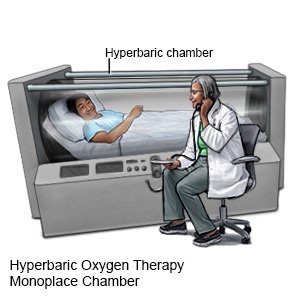Carbon Monoxide Poisoning
Medically reviewed by Drugs.com. Last updated on Apr 6, 2025.
Carbon monoxide (CO) poisoning is a life-threatening condition caused by exposure to high levels of CO. Your brain, organs, and tissues can be damaged from a lack of oxygen. You will need to watch for new signs and symptoms for several weeks or months after treatment.
WHILE YOU ARE HERE:
Informed consent
is a legal document that explains the tests, treatments, or procedures that you may need. Informed consent means you understand what will be done and can make decisions about what you want. You give your permission when you sign the consent form. You can have someone sign this form for you if you are not able to sign it. You have the right to understand your medical care in words you know. Before you sign the consent form, understand the risks and benefits of what will be done. Make sure all your questions are answered.
An IV
may be used to give you liquids. Liquids may increase your body fluids and blood pressure.
Medicines:
- Anticonvulsants may be given to control seizures.
- Clot busters help break apart blood clots. This may increase blood flow to your heart. It is given through an IV and may be given at the same time as other blood thinners. This medicine may decrease the amount of damage to your heart. You will bleed and bruise more easily after you get clot busters.
Tests:
- Blood tests are used to check the amount of oxygen and carbon dioxide in your blood. The tests may show how much CO you were exposed to. The tests may also check your overall health and check for other problems that CO poisoning may cause.
- A neurologic exam may show how well your brain works after exposure to CO. Healthcare providers will check your pupils, memory, hand grasp, and balance.
- Telemetry is continuous monitoring of your heart rhythm. Sticky pads placed on your skin are connected to an EKG machine that records your heart rhythm.
- An EEG may be used to how your brain is working. Small pads or metal discs are put on your head. Each has a wire that is hooked to a machine. This machine prints a paper tracing of brain wave activity from different parts of your brain.
- X-ray pictures may be used to check your lungs and heart. The pictures may show signs of infection, such as pneumonia, or a collapsed lung.
- CT, MRI, or PET scan pictures may show damage to your brain from CO poisoning. You may be given contrast liquid to help your brain show up better in the pictures. Tell the healthcare provider if you have ever had an allergic reaction to contrast liquid. Do not enter the MRI room with anything metal. Metal can cause serious injury. Tell the healthcare provider if you have any metal in or on your body.
- An echocardiogram is a type of ultrasound. Sound waves are used to show the structure and function of your heart.
Treatment:
- Extra oxygen may be given if your blood oxygen level is lower than it should be. You may get oxygen through a mask placed over your nose and mouth or through small tubes placed in your nostrils. Ask your healthcare provider before you take off the mask or oxygen tubing.
- Hyperbaric oxygen therapy is used to get more oxygen into your body. The oxygen is given under pressure to help it get into your tissues and blood.

- An endotracheal tube may be put into your mouth or nose. It goes down into your windpipe to help keep your airway open and help you breathe. It may be hooked to a ventilator (breathing machine). You may get extra oxygen through the ET tube. You will not be able to talk while the ET tube is in place.
RISKS:
Without treatment, your signs and symptoms may become life-threatening. You may develop heart, lung, or brain problems. Your kidneys may stop working, or you may go into a coma or have a heart attack. Even with treatment, your signs and symptoms may come back. You may have trouble thinking or remembering things, tremors or shaking, depression, or anxiety.
CARE AGREEMENT:
You have the right to help plan your care. Learn about your health condition and how it may be treated. Discuss treatment options with your healthcare providers to decide what care you want to receive. You always have the right to refuse treatment.© Copyright Merative 2025 Information is for End User's use only and may not be sold, redistributed or otherwise used for commercial purposes.
The above information is an educational aid only. It is not intended as medical advice for individual conditions or treatments. Talk to your doctor, nurse or pharmacist before following any medical regimen to see if it is safe and effective for you.
Learn more about Carbon Monoxide Poisoning
Treatment options
Care guides
Further information
Always consult your healthcare provider to ensure the information displayed on this page applies to your personal circumstances.
